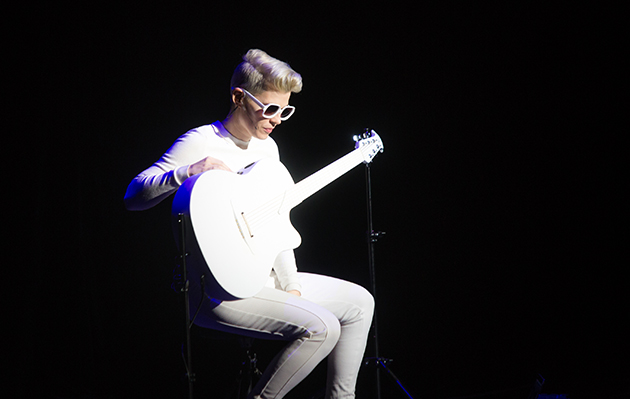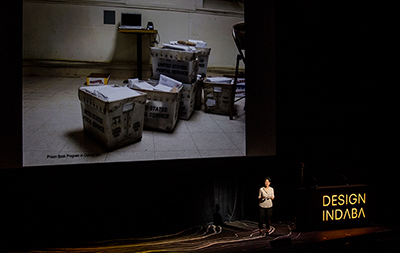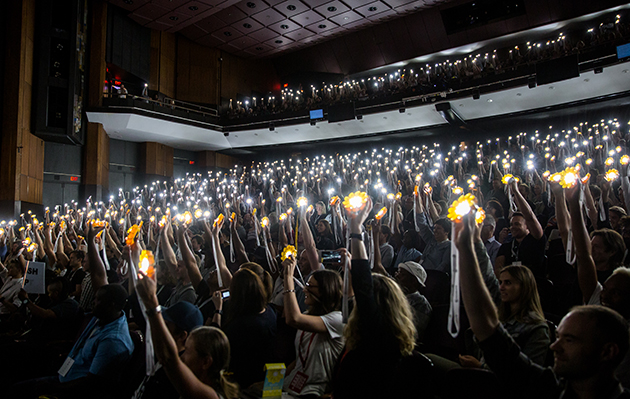|
|
||
|
This year’s event in Cape Town again successfully melded together design superstars with emerging practitioners, but its growing global reputation holds risks as well as opportunities, says John Jervis Design Indaba in Cape Town is the best design event I’ve ever attended. I’m not comparing like with like – every one has a different job to do, ranging across commerce, education and so on. Design Indaba, however, is the only place where a wide range of professionals – not all designers – come together and just talk design. They share knowledge and experience, make connections, sometimes even initiate collaborations. And they have an enjoyable time doing so. As in all such gatherings, alcohol plays a part in this conviviality – its pervasive presence at this year’s event seemed old-fashioned – but it is far from the sole ingredient. Perhaps the most important element in Design Indaba’s success is the curation of its speakers, of which there are 40 or so spread over three days. A network of contacts, masterminded by founder Ravi Naidoo, pulls together a huge range of talent, and the large majority of these come up trumps. The real stars are the ‘global graduates’, winkled out from design programmes around the world to present short speeches on one particular aspect of their practice. Their combined impact gives one faith in the future of the profession, as much for intentions as for realised outcomes. These included RCA graduate Arjun Harrison-Mann’s web-based efforts to facilitate both protest and legal challenges around incapacity benefit; Rhode Island master’s student Bo-Won Keum’s work with Books to Prisoners in Seattle, which is leading to a publication based on interactions with inmates; and Design Academy Eindhoven graduate Isabel Mager’s disruptive investigations, both artistic and meticulous, into the repetitive human labour behind the production of Apple iPads.
Rhode Island student Bo-Won Keum presented work with Books to Prisoners in Seattle Medium-sized studios seem equally happy to be flown out to Cape Town, build profiles and contacts, and pay Design Indaba back with exclusive, whole-hearted presentations, whether the star graphic designer Kate Moross on the professional and human realities behind her seemingly effortless ascent, or the collaboration between designer Giorgia Lupi and guitarist Kaki King on the potential of information design to facilitate both notation and performance, ending with the debut of a resulting composition. Artists Lernert & Sander pulled no punches with another debut, the entertaining We Forgive You, a performance based around the widespread appropriation of their images and films across the world. To generalise somewhat, the likeability – and even credibility – of presentations tended to diminish as the profile of the speakers increased. However worthy the intentions, the stamp of the motivational conference or TED talk hung a little heavy over slick efforts by Airbnb founder Joe Gebbia, designer Nelly Ben Hayoun and What3Words founder Chris Sheldrick (who included a Band Aid-style video, complete with joyful favela dwellers receiving a first home address). Creative director Ayse Birsel ended up telling us we were all our own heroes and she was Katy Perry; architect Winy Maas of MVRDV spent much of his time engaged in an incomprehensible stream of consciousness before showing the firm’s recent projects. Others, such as Stefan Diez, Craig Dykers of Snøhetta and Olafur Eliasson escaped with their dignity intact, giving careful introductions to their practices and to the benefits and pitfalls around global practice. Tea Uglow of Google’s Creative Lab in particular gave an interesting and personal presentation on doubt as a catalyst for design, which did, however, suggest that the reinvention of the book for the digital age remains a distant goal. Yet the lasting impression from this older generation was provided by ‘creative juggernaut’ Tom Collins who, with enormous charm, unwittingly revealed his descent from youthful idealism around the potential of design to shape the future to his recent superficial Spotify makeovers. One can’t help but wonder whether today’s earnest global graduates will be forced to follow a similar path from idealism to accommodation, or end up leaving the industry.
Graphic designer Kate Moross spoke about the professional and human realities behind her seemingly effortless ascent These concerns should act as a warning for Design Indaba (which does have expansionist ambitions, with a curatorial role at Helsinki Design Week later this year) and to those hoping to launch similar festivals. As the ceaseless proliferation of biennials and related festivals in the art world proves, one celebration is a beautiful thing; multiple celebrations provide a distasteful mask hiding wider industry failings, whether the increasing commodification of art, or the lack of concrete results to justify the events’ extreme extravagance (and, in most instances, their continued bank-rolling of Hans-Ulrich Obrist’s career). Design Indaba has avoided these tendencies to date, keeping commerce at arms distance despite minimal government backing. This does leave it vulnerable to envious rivals with easier access to funding, but it also ensures its particular appeal among creatives. The discrepancy between the ethical, life-enhancing claims made for design’s impact at Design Indaba and the self-evident realities is perhaps a greater cause for concern. After 22 years, the paucity of African representation among the conference speakers, and the lack of diversity in the audience, were causes for wonder among new attendees – where are the fresh generation and wider public that might have flourished under its auspices? Even more sobering, of course, was the absolute contrast between Design Indaba’s embrace of champagne and chauffeurs and the continued unemployment and poverty of nearby shanty towns.
Artists Lernert & Sander debuted We Forgive You, based around the widespread appropriation of their images and films across the world There are swift comebacks on both these issues. Design Indaba needs to be international in both outlook and content to ensure its position as a premier global design event, attracting both speakers and sponsors. And it would be ridiculous to expect Design Indaba to solve South Africa’s problems. But the event should frankly acknowledge and discuss such limitations rather than engaging in misleading grandstanding about design as an untrammelled force for the common good. Design Indaba’s festival at the Artscape Centre has brought something hugely positive to Cape Town over the years, but it has done this as a creative jamboree, not as a social force. The best speaker of all, in both content and presentation, was Luis von Ahn, the Guatemalan computer scientist who created Captcha, reCaptcha and the free language-learning app Duolingo, a Swahili version of which was announced during the conference. Here is someone – tellingly, from a non-design background – who is making a real difference to society. Amidst the pizzazz, Design Indaba could do with a few more such heavyweights. Design Indaba’s conference took place in Cape Town from 1 to 3 March 2017 |
Words John Jervis
Above: Guitarist Kaki King |
|
|
||
|
Audience members raising Olafur Eliasson’s Little Sun solar-powered lamps above their heads |
||






















